Edições anteriores
-
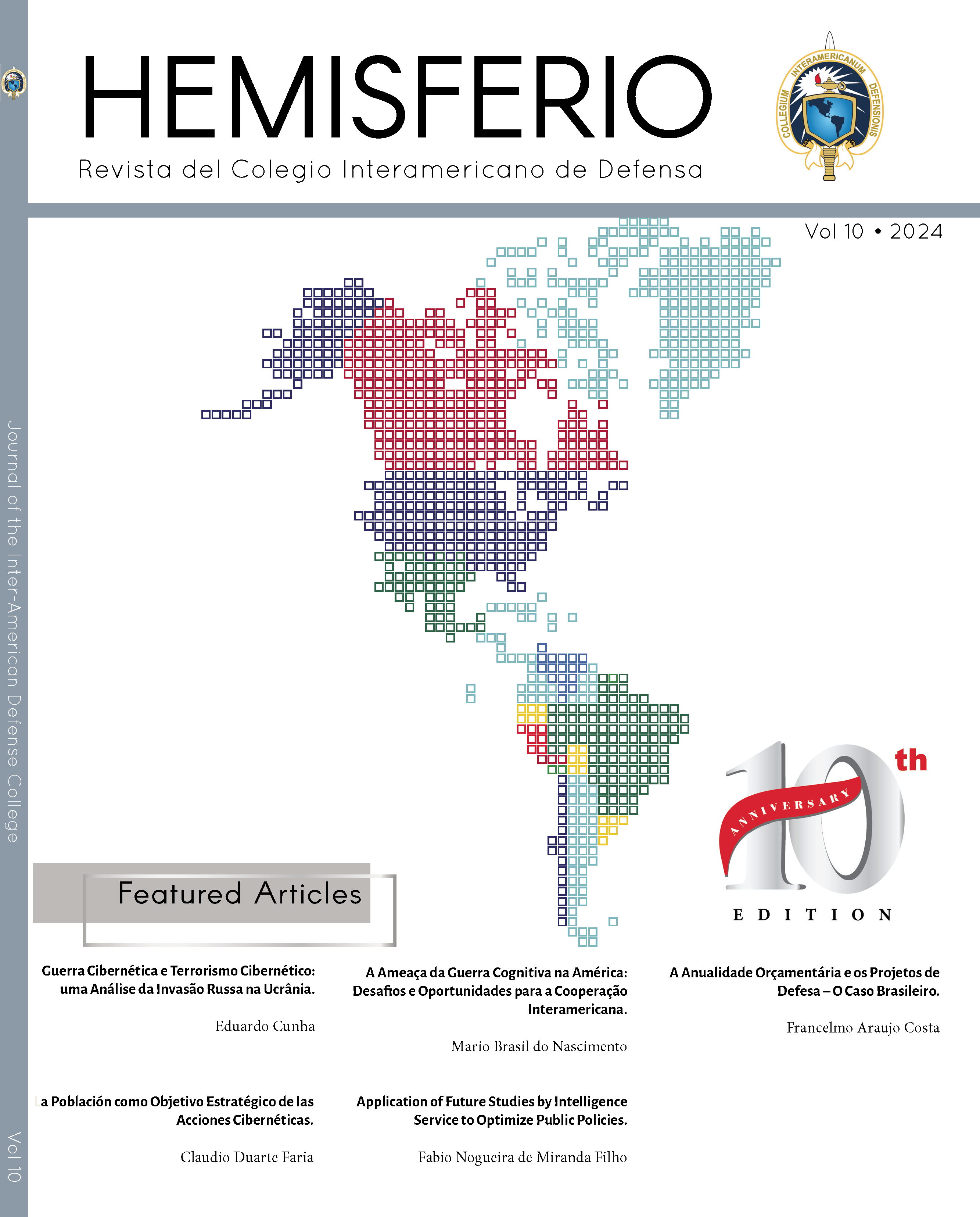
Hemisferio Volume 10
v. 10 (2024)En las últimas dos décadas la inteligencia artificial (IA) ha venido transformando el ámbito de defensa y seguridad con impactos tanto a nivel estratégico como operativo. Se han implementado sistemas de ciberseguridad automatizados con herramientas avanzadas para el análisis y procesamiento de datos. Esto ha permitido identificar patrones ocultos y predecir escenarios futuros con mayor precisión, al mismo tiempo que se redefinen políticas de prevención y respuesta ante amenazas complejas y diversas. En este contexto dinámico es que los artículos presentados en el décimo volumen de Hemisferio adquieren especial relevancia.
-

Hemisferio Volume 9
v. 9 (2023)Hemisferio’s ninth volume articles not only address current challenges but also explore future scenarios, proposing strategies to tackle emerging issues in the region. They recognize global relevance, requiring collaboration beyond borders. Resilience and adaptability are key for a secure and prosperous future in the Western Hemisphere.
-
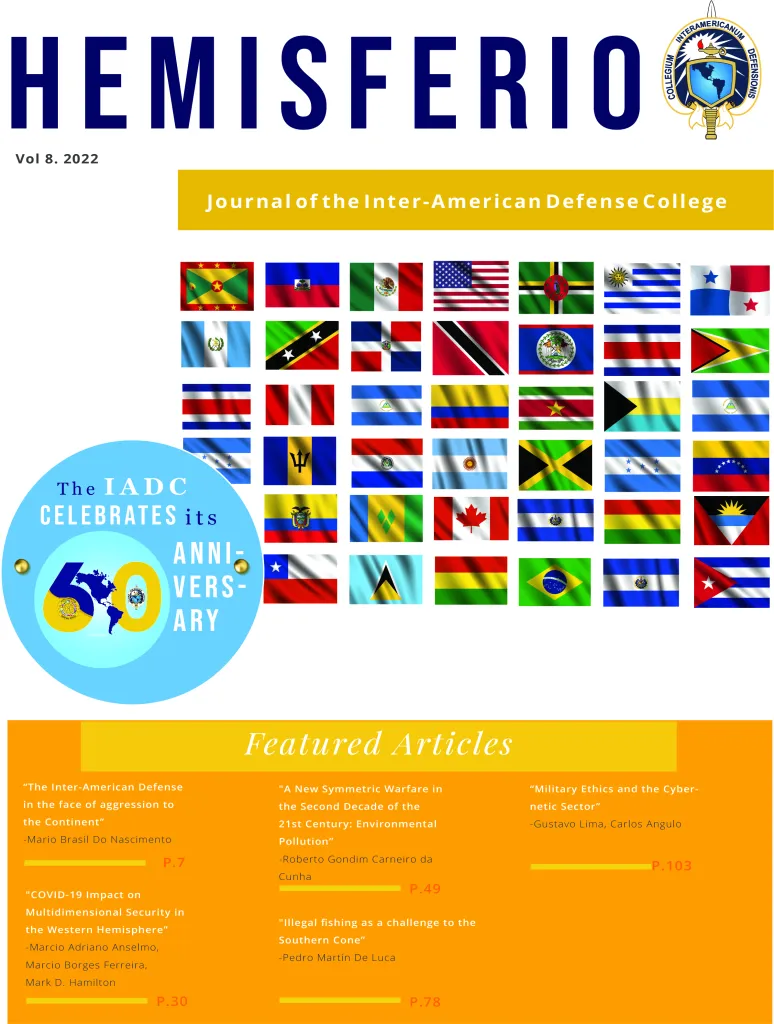
Hemisferio Volume 8
v. 8 (2022)This volume brings together a series of perspectives on defense and security, specifically on: the need to re-discuss inter-American defense, the effects of the pandemic in the region, the impact of pollution of the seas and illegal fishing, as well as a reflection on how to address ethics in the military sphere for the use of cyber-weapons.
-

Hemisferio Volume 7
v. 7 (2021)In this volume, we are in the midst of a new era. We are at an opportune moment to rethink conceptual and normative frameworks, the roles of institutions, and cooperation mechanisms in the defense and security field.
-
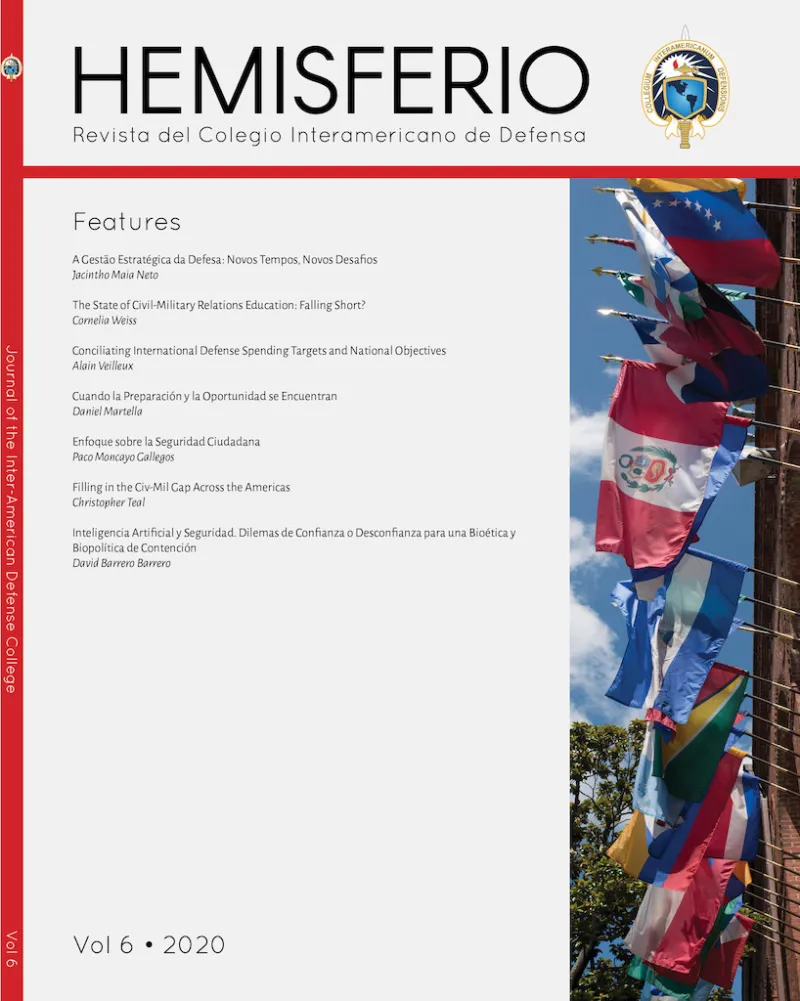
Hemisferio Volume 6
v. 6 (2020)We invite you to read this sixth volume to understand better the phenomena of violence, its risk factors, and its conditioning aspects. In addition, we share valuable contributions on the rise of populism, the teaching of civil-military relations, the role of the armed forces during the pandemic and the challenge in managing its resources, the commitments with allied countries, and the need to create a joint Artificial Intelligence White Paper for the Western Hemisphere.
-
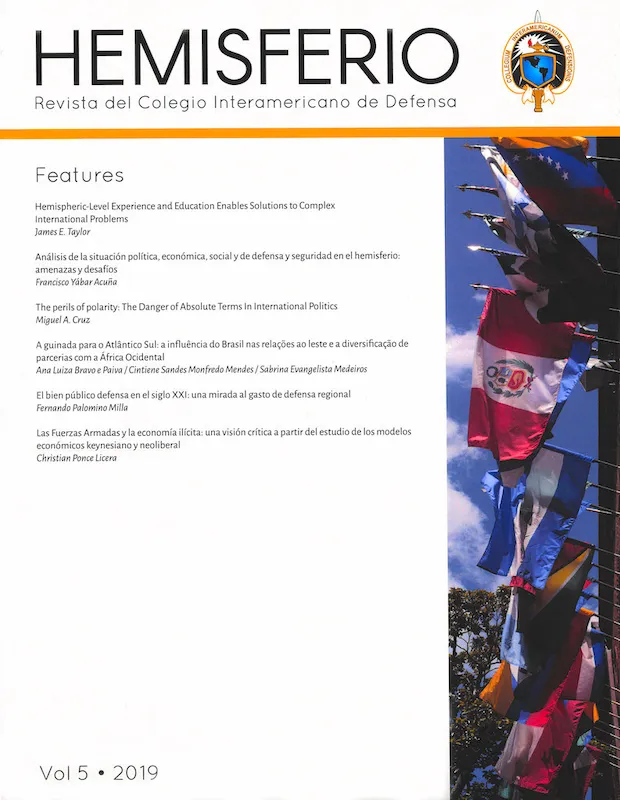
Hemisferio Volume 5
v. 5 (2019)Finding solutions to the common threats faced by the countries in our hemisphere is the primary motivation for this volume. It analyzes how to strengthen multilateralism in the region, the different international actors and their relative powers in the regional sphere, the obstacles to integration, the measurement of defense spending as a measure of mutual trust, and the impact of the military in the fight against illicit activities.
-

Hemisferio Volume 4
v. 4 (2018)This fourth volume addresses the need for an institutional framework that better response to the challenges, concerns, and new threats in the hemisphere. It discusses the importance of civil-military relations, the ideal institutional framework for ensuring cyber security, the institutional transformation of the Argentine armed forces, the need for Mexico’s new accusatory penal system, and the military’s contribution to economic development and human security.
-
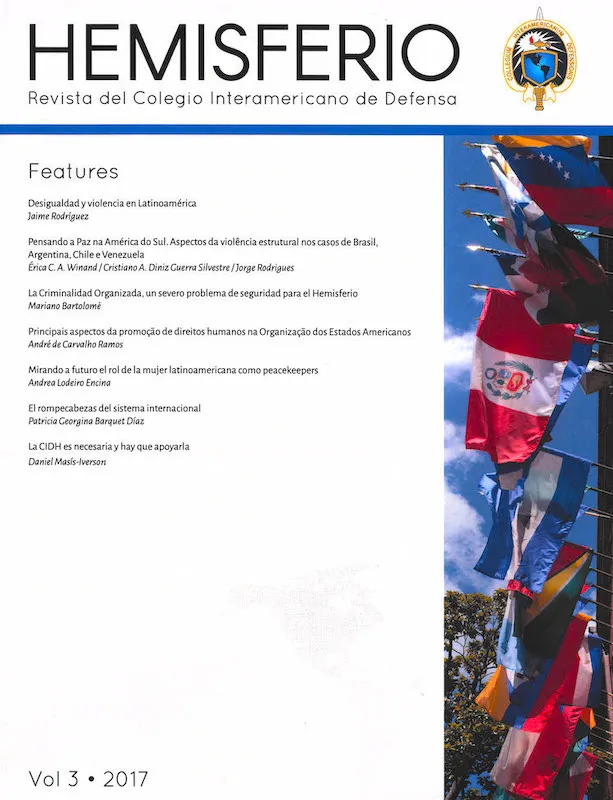
Hemisferio Volume 3
v. 3 (2017)The third volume of Hemisferio reflects on the institutional crisis and increased violence in the region. Undoubtedly, the consolidation of transnational organized crime as a political actor has made the scenario more complex. From the perspective of international relations, it analyzes the new challenges, the work of international organizations on human rights, and the role of women as peacekeepers.
-

Hemisferio Volume 2
v. 2 (2016)This second volume begins with remarks by the OAS Executive Secretary of the Inter-American Commission of Women, Amb. Carmen Moreno. It also addresses topics such as: human rights, complex emergencies, Brazil’s security policy on the Amazonian border, drug trafficking and terrorism, the use of force in the legal framework of operational law, strategic thinking, the role of the Vatican in the rapprochement of the United States with Cuba, and the juggling of the IADC in a multilateral environment.
-
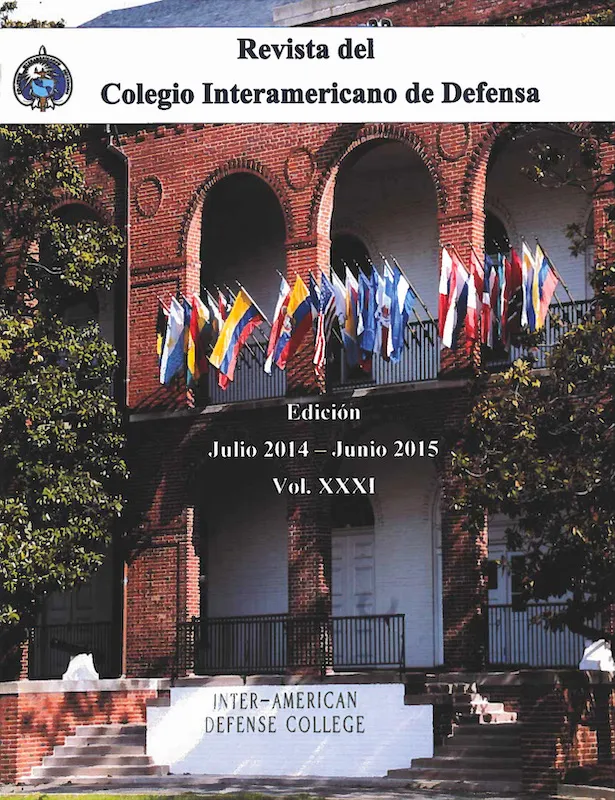
Hemisferio Volume 1
v. 1 (2015)After 8 years in which the IADC did not publish its academic journal, we decided to resume it under the title of “Hemisferio.” The objective is to provide a means of academic dissemination that promotes the research of students, graduates, professors, and experts. This first volume reflects on the validity of the IADC, the military’s role in the current context, the importance of interstate cooperation, and the impact of security and defense institutions on economic development

